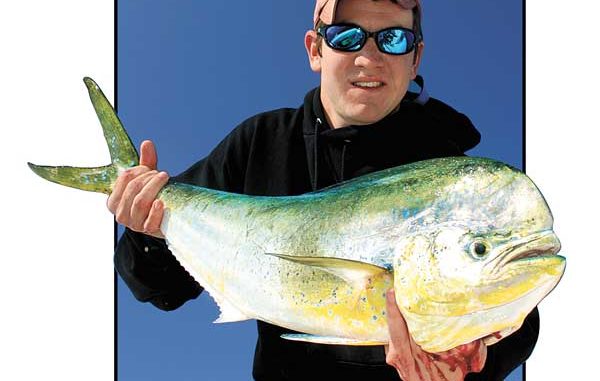
Palmetto State fishermen who wait for April miss the real offshore kickoff.
The water temperature jumped about six degrees in the space of a hundred yards, the ocean went from a dark green to an azure blue, and beyond a wooden container that was floating along, the beginning of a grassline was forming.It was enough for Adam Paul to pull back on the throttle and decide it was time to drop baits in the water.
Ninety minutes later, with a nice wahoo and a half-dozen gaffer-sized dolphin in the fish box, Paul, the leader of the GillznFinz pack, declared, “People miss out not coming out this early.”
It was the third week of March, and just inshore of the “226 Hole,” about 55 miles southeast of Charleston harbor, the bluewater season was underway.
“March has always been a breakout month,” said Paul, who runs the GillznFinz.com website and is host for the TV show of the same name that debuts this month on Versus. “Our four best months are September and December, March and May — May being wahoo, September and December being sailfish.
“We also have a phenomenal wahoo fishery in March. The two months when I’ve caught the biggest wahoo out of Charleston are March and September,” Paul said. “I’ve caught three wahoo over 70 pounds in March the last couple of years. We get a fairly good showing of blackfin tuna — but not as good as up around Georgetown — and we usually get a good showing of dolphin, usually good-sized dolphin.”
Paul is most familiar with the waters off Charleston, having worked as a 20-something charter captain before taking a job with Sufix, then creating GillznFinz. But for the ports along South Carolina’s southernmost coast to Little River on the North Carolina border, a lot of charter and private captains crank up their outboards and diesels and kick off the season.
They’ll be rewarded with surprisingly good bluewater fishing and with a fairly empty ocean, because not enough anglers know how good the action can be at basically the same time that spring-turkey season is opening in the Lowcountry: March 15.
“March has historically not been the best month for the weather,” Paul said. “But if you can pick and choose your days, it’s well worth your time and money.”
That feeling is echoed by Capt. Ed Keelin of Full Pull charters out of Georgetown and Capt. Jeff Fisher, who runs the Tail Wacker out of Coquina Harbor in Little River. Pick your day, do your homework and count on running into the makings of a grill full of fish steaks.
“In March, you’ve got to find that major temperature break, where it changes between three and five degrees,” said Fisher. “You can get satellite shots and see the water temperature. You’re looking for eddies of warm water off the Gulf stream. They’ll spin off, and they’ll hold the most fish, because the fish don’t want to leave those kinds of places.
“Two or three degrees’ difference in the water temperature can make a big difference. For instance, blackfin tuna prefer slightly cooler water, whereas yellowfin prefer warmer water.”
When he returns from the winter bluefin tuna season off North Carolina’s Cape Lookout, Keelin will start watching the weather off Cape Romain. Usually, the second half of March shows some promise.
“At this time of year, the water can still be cold, but if the warm water pushes the bait over the (30-fathom) break, it can start early,” Keelin said. “If we get that 64- to 70-degree water, what you hope is that the water comes in and the bait comes across the break. Then, the fish will start to hang around.”
When they do, it’s pretty basic bluewater trolling.
“You look for solid temperature breaks, color changes, anything that relates to structure,” Paul said. “You can find some pretty big current changes with the cold water. The water on the inside will be much colder than the water coming in from the Gulf stream, so you get some very stark color or current changes.
“Keep your eyes open. If I find a place like that, I’ll work both sides of it, from any direction I can. You’re trying to coax the fish that are there to bite.”
As scarce as yellowfin tuna have been the past handful of years — Keelin said he heard of about a dozen fish being caught out of Georgetown last spring, then nothing the rest of last year — Paul downsizes his terminal tackle slightly to try and get more bites.
“I’ll use pinks and light blues — tuna colors — and I’ll trim my Sea Witches up a couple of inches to make them more compact,” he said. “I’ll use fluorocarbon leaders. One of the big things with tuna is down-sizing your leader. If you only have a few fish out there, you want to make sure you get a chance at them. I’ll use a fairly light leader, anywhere from 80-pound test down to 40 if they’re real skittish, and I always use a wind-on leader. Everything I’ve got in the water will be fluorocarbon — it’s abrasion-resistant, and it will be invisible. Everything else will be Hi-Vis, so I can see it.”
Fisher likes to fast-troll with cedar plugs early-on because he’s looking for fish rather than hearing a lot of reports about where they’ve been caught. He’ll run cedar plugs or Green Machines — 10 inches long instead of the usual 6-inch long bait — and he’ll pull his baits between nine and 12 knots. Then, if he finds a decent concentration of fish, he can pull the standard ballyhoo/Sea Witch rig.
“Blackfin will hit cedar plugs and ballyhoo, and dolphin will hit cedar plugs,” Fisher said. “You’ll get some wahoo — I think they’re out there all winter. They’ll go after a Green Machine, but most of the time you catch them on a ballyhoo and a skirt, or on a big trolling plug like a Stretch 25 or Stretch 30.”
Keelin expects most of the wahoo he runs into to hit lures trolled well below the surface, often on a lure dragged behind a planer board.
“You don’t ever leave the dock without a planer,” he said. “The wahoo will hit them, and a lot of the time, the first tuna you catch might hit the planer rod, then come up on your long poles.”
Most charter captains point to Keelin’s home waters, including the Georgetown Hole, as the best spot to run into blackfin tuna.
“We see more blackfin; they’re the first fish here,” he said. “We have good blackfin fishing in the fall on into December. I don’t know if they ever leave. Nobody fishes for ‘em in the winter. In March, I’ll start at the Georgetown Hole. I think that warmer water pulls into that deep hole first; that’s the first place the warm water usually shows up. Later on, I may go to the Scarp to get away from the crowds.”
Keelin and his first mate, John Warren Floyd, pull a variety of Sea Witch colors for a variety of fish.
“We’ve got two schools of thought on wahoo,” Keelin said. “John Warren is fond of pink and blue; I like blue and red. For tuna, we like black/blue, purple/blue, and green/white really works on blackfin.
“The tuna seem to bite the first thing in the morning and late in the afternoon. On cloudy days, the bite might stretch out a little,” he said, “but you certainly want to be fishing at first light.”

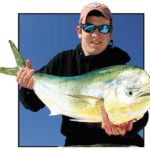
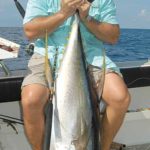
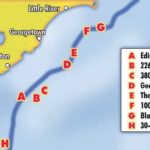
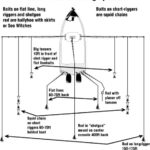
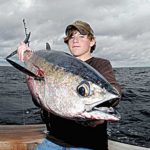
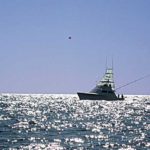
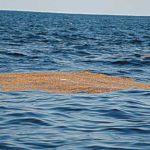
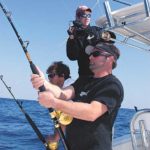



Be the first to comment